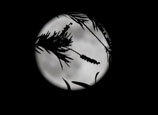
WELLINGTON, June 24 (Xinhua) -- Residents of New Zealand's quake-battered second city of Christchurch are generally happy with "disaster tourism" so long as it is carried out with sensitivity for the survivors and the victims, according to academic research.
University of Otago marketing researcher Dr Shelagh Ferguson said the study, which focused on in-depth interviews with about 50 residents, could help tourism operators internationally work in disaster zones without offending residents.
The study looked at reaction to tours through the city's "Red Zone," the area worst affected by the 6.3-magnitude quake that killed 185 people in February 2011.
"We found that most residents were accommodating with regard to earthquake tours focused on the CBD," Ferguson said in a statement Monday.
"However, they were far less happy with the possibility of tours coming into residential areas to view destroyed homes in the eastern suburbs."
The study clearly indicated that focusing on the 185 people who died was unacceptable to residents, while taking videos and photographs of sites of mass fatalities was generally viewed as inappropriate.
However, people were resigned to the fact that interest was high in sites such as the CTV building, which collapsed and caught fire in the quake, killing 115 people, including 64 Asian students studying at an English language school.
"There was an acceptance that sites involving high fatalities, like the CTV building, are of significant interest and that visiting these places is valid so long as any tour information is conveyed in a general sense and does not get into personal details, " said Ferguson.
The research suggested that disaster tourism could be used to raise money for recovery efforts, with a certain percentage of the tour price going towards reconstruction or assistance.
"Fundamentally it warns against sensationalizing the impact of the disaster, particularly on people's personal lives, and making sure staff present information as objectively and authentically as possible."
Christchurch has been shaken by thousands of tremors since the first major quake in September 2010.
















 Childhood in an isolated sterile room
Childhood in an isolated sterile room


![]()
